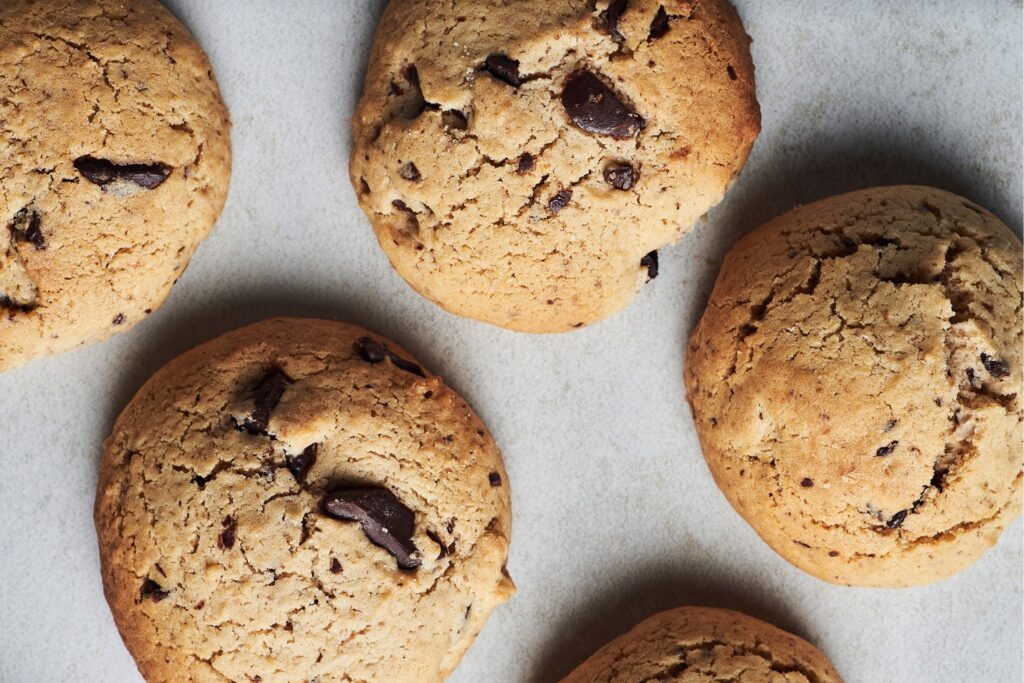Everyone loves cookies! To some, cookies are a big deal because of judged baking competitions (like at county fairs). To others, cookies are a major big deal, as in financially huge! From several stands, “Sweet Martha’s Cookie Jar” makes and sells over 3 million chocolate chip cookies a day, during the 12-day run of the Minnesota State Fair. Of course, the SWEET MARTHA’S trademark is federally registered but what about other IP protection? Can you protect a cookie recipe by copyright, patent or trade secret?
COPYRIGHT
A cookie’s ingredients list or a simple set of directions for baking that cookie is not protectible by copyright. An author/baker might be able to copyright a recipe that creatively explains how or why to assemble and process those ingredients, and that would allow the copyright owner to stop others from copying that explanation. It does not, however, stop someone from making cookies that taste the same, or from restating that explanation in a creatively different manner. Copyright protection – if available at all – provides rather limited rights for recipes.
PATENT
A composition of matter (like a cookie) can be patented. The same is true of a process for making a cookie (its recipe). To be patentable in the USA, an invention must be novel and non-obvious over all that has come before it. That means, for a cookie composition, the actual collection of ingredients must be entirely new and that the combination of ingredients forming this “new” cookie (and its associated recipe) would not have been obvious to one of ordinary skill in the art of cookie making. The modification of ingredients in a recipe that may lead to a novel cookie flavor or texture, or an improved cookie shelf life, is not patentable unless the patent applicant can prove “a coaction or cooperation relationship between the selected ingredients which produce a new, unexpected, and useful function.” In re Levin, 178 F.2d 945, 948 (Cust. & Pat. App. 1949). To be patentable, there must be some unexpected result attained by the addition/subtraction/substitution of an ingredient, or from some modified step(s) in the cookie-making process.
“Sweet Martha’s,” as mentioned above, is regionally famous for its chocolate chip cookies. The chocolate chip cookie – an all-American favorite – was “invented” in 1938 by Ruth Graves Wakefield at her Toll House Inn in Whitman, MA. Mrs. Wakefield never applied for a patent on the cookie or her recipe. It is estimated that between 25-50% of all cookies baked and sold in the USA are chocolate chip cookies. This makes the makers of chocolate chips very happy.
TRADE SECRET
Food recipes are, of course, eligible for trade secret protection. Famous examples include KFC’s blend of 11 herbs and spices, and the formulations of Coca-Cola and Bush’s Baked Beans. Any information that has value from being secret and is subject to reasonable measures to keep it secret can be a trade secret. On topic, the recipe for FAMOUS AMOS brand chocolate chip cookies is also a trade secret – now owned by Ferrero SpA (the maker of Nutella).
WHAT ABOUT INTERNET COOKIES?
What about those other “cookies” that we consume on a daily basis, virtually every time we surf the web? These cookies are small data sets that are placed on a user’s internet-accessible device by the user’s web browser while visiting a website. These cookies save user-entered information or track the user’s browser activity.
Such cookie technology is of course protectable by IP – computer code is protectable by copyright, a patent was awarded to Netscape Communications in 1998 for the initial “internet cookie” concepts (which were on a 1995 version of Internet Explorer), trade secret protection is available for continued confidential cookie improvements and, if you sell it, you can brand it, so trademarks apply as well. Interestingly, the term “cookie” in this context is derived from the fortune cookie (as in, a cookie with an embedded message).










